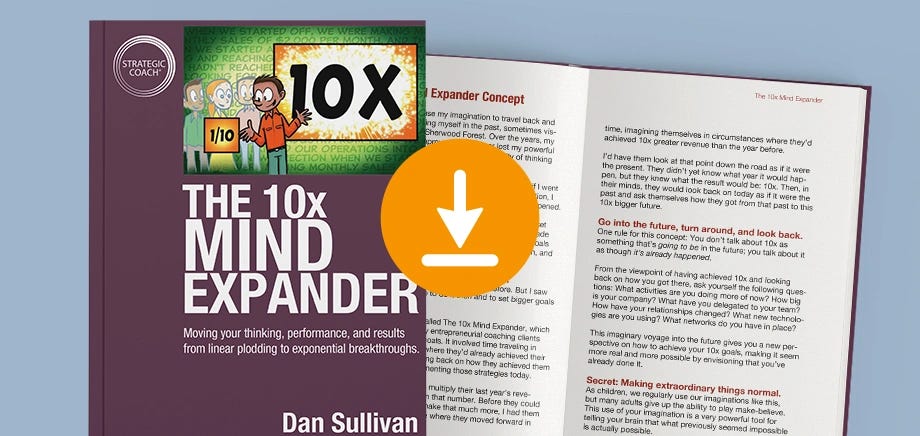Training Your Brain to Think in Decades, Not Days
Short-term wins are loud. Long-term thinking is quiet and far more powerful. Here's how to develop it.
In this issue:
The neuroscience behind future-focused thinking.
Why mature leaders are wired for vision—but must train for it.
A story of transformation, from reactive leadership to long-range clarity.
Welcome to this week’s edition of Applied Neurogenesis!
Here’s something I’ve learned from the most effective leaders: they’re not reacting to this quarter. They’re preparing for the next decade.
In a business culture addicted to urgency, we reward reactivity. But truly influential leaders think long-term. They anticipate. They zoom out. They make decisions today that compound over time.
Neuroscience now confirms that future-focused thinking isn’t just a trait. It’s a trainable brain function. And leaders over 50 have an edge most overlook: neural wiring built for depth, reflection, and strategic integration.
Let’s explore how to turn that potential into your advantage.
How to Train Your Brain for Long-Range Thinking
1. Activate the Default Mode Network (DMN)
The DMN is engaged during imagination, reflection, and future planning. It thrives in quiet, non-task-focused states.
Quick Tip: Schedule 15 minutes each week for “thinking time” without an agenda. This activates big-picture cognition and creative foresight.
2. Strengthen Episodic Foresight
Episodic foresight is your brain’s ability to simulate future scenarios based on memory and pattern recognition.
Quick Tip: Use “future simulation journaling”—write in detail about where you want to be in 3–5 years, focusing on how decisions you make today support that vision.
3. Engage Prefrontal Reflection
The prefrontal cortex manages long-term planning, impulse control, and strategy. It can be trained to resist short-term thinking.
Quick Tip: Before any major decision, ask: “What’s the 3-year impact of this choice?” This activates executive function over emotion.
4. Limit Cognitive Distraction to Expand Strategic Bandwidth
Short-term reactivity shrinks your ability to zoom out and reflect. Reducing digital noise creates space for higher-level thinking.
Quick Tip: Implement a 90-minute distraction-free block each week just for strategic foresight and deep planning.
5. Leverage Wisdom Integration (a Midlife Advantage)
Aging brains, especially those over 50, become better at synthesizing information, discerning patterns, and making values-based decisions—ideal for future-focused leadership.
Quick Tip: Host or participate in “wisdom circles”—small peer groups that reflect on long-term goals, leadership legacy, and future shaping.
Innovations to Watch
Tools to support long-range thinking and visionary leadership:
Futures Platform: A strategic foresight platform that helps leaders map trends and scenario plan.
MindNode: A visual mapping tool to organize long-term goals and systems thinking.
10X Planner by Strategic Coach: Combines daily actions with long-range vision setting for growth-minded executives.
Success Story
This week’s success story is Alison, a 58-year-old founder who realized her decision-making was overly reactive. She began training her brain for long-range thinking through weekly future simulations, reflective journaling, and structured strategic solitude. The result? A powerful shift in leadership style, including a 5-year roadmap that energized her team and positioned her company for scalable growth.
“I used to chase the urgent—now I lead from vision,” she says.
Community Corner
This week’s top question comes from Thomas:
“How do I shift from being reactive to being visionary?”
Great question, Thomas. Start by building a small daily habit of reflection. Ask yourself, “What did I do today that supports where I want to be in 5 years?” That one question starts rewiring your brain for foresight.
How do you cultivate long-term thinking in your leadership? Share it with the Over51 community!
Future-focused leadership is a trainable cognitive skill, not just a personality trait. By engaging the right brain networks and integrating strategic reflection into your daily life, you can lead with vision, alignment, and long-range impact.
Want a guided worksheet for training strategic foresight? Subscribe to Applied Neurogenesis for exclusive brain tools, executive frameworks, and neuroscience-backed leadership content.
Stay sharp,
Stu Morris




